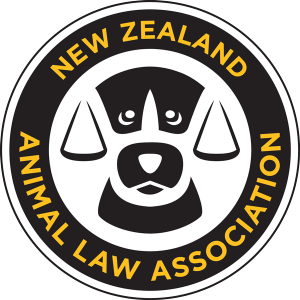Methamphetamine: Not Only Harming Our Communities
It’s no secret that methamphetamine, or “P” as it is commonly called, is one of the major issues facing New Zealand communities today - on an almost daily basis the New Zealand media covers a P-related story.
This highly addictive drug is destroying many peoples’ lives and those of their families. We are well aware of the human impact of methamphetamine, but its impact on animals whose owners are “P-cooks” is largely ignored.
Section 10 of the Animal Welfare Act 1999 (AWA) provides that the owner of an animal must ensure that the physical, health and behavioural needs of their animal are met in accordance with good practice and scientific knowledge.
Failing to do so is an offence under section 12 of the AWA. An animal owner who is a P-cook may inadvertently expose their animal to the chemicals used in manufacture of P, or to the drug itself (both of which are harmful and poisonous), and this could cause significant injury or illness to the animal.
Accordingly, the owner is arguably committing an offence under section 12 of the AWA, as the needs of their animal are not being met in the manner required by section 10 of the AWA.
In addition, the animal owner in this situation is also likely to be in breach of section 29(a) of the AWA, as the exposure of their animal to those chemicals and to methamphetamine could be considered ill-treatment of the animal.
“Ill-treatment” is defined in section 2 of the AWA as meaning to cause an animal to suffer by any act or omission, pain or distress that is of the kind or degree that is unreasonable or unnecessary.
It has been documented by vets in the United States of America and China that dogs who have been living in a house where P is cooked have suffered chemical burns, sores, cardiovascular problems, stomach, skin and respiratory issues, are often highly agitated and distressed and, where they have ingested P, they have had problems with their internal organs and central nervous system.
Like humans, animals can also suffer withdrawal symptoms when they are no longer exposed to the drug. Treating an animal in this way, even if such treatment is inadvertent, is likely to constitute ill-treatment, and therefore breach section 29(a) of the AWA.The Codes of Welfare under the AWA may also be relevant.
For example, Minimum Standard 14(a) of the Animal Welfare (Dogs) Code of Welfare 2010 (Code), requires dog owners to take all practical steps to ensure that their dog is not exposed to poisons and harmful substances.
A dog owner who cooks P in the house where their dog also lives may expose their dog to toxic and potentially deadly chemicals and could therefore be in breach of the Code. A breach of the Code supports the assertions above that dog owners who cook P are likely committing an offence under the AWA. Methamphetamine is harming more than just our communities.
It is harming animals too. P-cooks who are arrested by the police are allowed to keep their animals. If a child was in the same situation, they would likely be removed from the home.
Perhaps a reason for the difference in treatment here is that animals are viewed by the law as property, rather than as sentient beings and unless they appear severely neglected or unwell, the plight of animals in such circumstances goes largely unnoticed.
The human impact of P is the focus.
It is not known how many animals are suffering because of methamphetamine in New Zealand, but unless changes are made, one thing is certain – that number will only continue to grow.
Written by Kathryn Guise
Reference:
Bischoff K, Beier E, Edwards WC: Methamphetamine poisoning in three Oklahoma dogs. Vet Hum Toxicol. 1998, 40: 19-20.
Pei Z, Zhang X: Methamphetamine intoxication in a dog: Case report, BMC Vet Res. 2014, 10:139.

